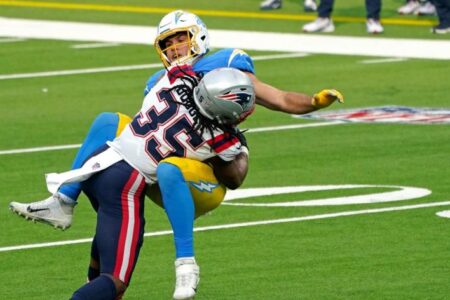memento,
The 800 pound gorilla, the only significant factor here is temperature of the air INSIDE THE BALL. One cannot control this temperature, therefore you must measure it in order for the pressure measurement to have any meaning.
Any pressure measurement taken WITHOUT measuring the temperature of the air inside the ball, is completely irrelevant.
Fortunately, this is easy. You stick a calibrated thermistor onto the end of a pressure needle, and measure the internal air temperature before you measure the pressure.
For example, this whole snafu presents the perfect way to really "cheat the system". If you like low-pressure balls, fill them with hot air just before the measurement. If you like high-pressure balls, fill them with cold air. Once the balls equilibrate to game temperature, you will be outside of the regulation pressure range.
All the other factors, water content of the leather, scuffing (really?), expansion of the ball, are noise level and insignificant.
I'm guessing you posted a table of suggested starting gage pressures for referees to reference?
No, not really. Not a "starting pressure" reference.
The starting point chart would have acceptable pressure ranges for temperatures near room temperature, say from about 65° to 80°F, in increments of 1°F.
This is a reference table to use during the game if somebody should squawk the pressure of any particular ball. In order to determine if the pressure was properly set initially, one must measure BOTH the temperature & pressure of the air inside the ball and compare the value to a chart like this.
__
I do think that would be practical if football psi is to be upheld throughout future games.
No, no, no. That is NOT what I am suggesting.
"Maintaining PSI throughout the game" WOULD be a significant change in the way the game is played.
I am advocating, "set them just as they have always been set, 2 hours before the game. But measure the internal air temperature when you do it."
__
I also see referees muttering under their breath about the extra hoops they have to jump through in game ball preparation
TS, Eliot.
Your measurements are out of control. This is what needs to be done to bring them into control.
__
we need to know the actual values. The starting psig were not recorded, the halftime psig were not recorded, the final psig were not recorded.
Yes, if someone is serious about fixing this problem, then they've got to incorporate a very light version of ISO-9000, the same requirements to which all manufacturers must adhere.
The referees must be trained to take the measurements.
The instruments need to be calibrated. (once per year is typical).
All measurements need to be recorded.
One significant question is, "do the balls need to be serialized?" If all of balls for one team are set to the same pressure, then the answer is "no".
__
We are assuming a room temperature of 72°F at the start for both sets of footballs, when the room could have been closer to 80°F.
No, no, no.
By measuring the temperature of the air inside the ball, you do not need to assume anything. That is this method's specific advantage.
__
Volume is assumed constant for simplicity's sake, but the rain would cause the footballs to swell a bit as they get waterlogged.
The volume that matters is only the volume of air bladder inside the football. When the leather swells, it's not immediately clear whether that volume increases or decreases. But I do believe the volume change will be insignificant.
A pragmatic cross check, basketballs (my sport, and I presume indicative of football) get smaller in cold weather.
__
There are too many indeterminate variables to narrow it down to tenths of a psi, which seems to be the bar for criticism here.
We are already "narrowing down to 10ths of a psi": 12.4 PSI is unacceptable, 12.5 psi is acceptable.
We are simply doing this incompetently, with one critical variable - temperature - wildly out of control.
__
We can (and have) run tests to show it is plausible to lose a psi or two from game conditions, but we need more concrete information about those specific footballs to know.
Please elaborate on those "conditions".
In my testing, one ball out of four sprung an air leak, simply from my moving it from a cold bath, to refrigerator, to a test bench.
No 300 pound lineman jumping on it.
This was, shall we say, "eye opening".
But a leak will merely deflate the ball fairly quickly.
__
We don't even have concrete reporting about how much and how many footballs were below psig. Was it 10/11? Was it 1/11? Were they 2 psig under? Were they 1 psig under? A tick under for all of them? Was only one ball 2 psig under? Were the Colts' balls under? Blandino says none of them were recorded, so it's mostly from memory, and that's a real problem when we're talking about 11-24 footballs down to the tenth of a psi. Oh-- and there's that football game Walt Anderson had to referee.
Yes. Absolutely. The lack of documentation makes suspect everything about what went on with the balls during the Colts game.
__
I value the work and support to crunch the numbers and run the experiments, but we don't have enough concrete information to do more than guesstimate.
I disagree wholeheartedly.
We lack concrete information about what happened to the balls during the Colts game. True. That may be lost forever.
We may choose to improve our knowledge about how temperature, pressure, moisture, etc. interact with each other in a football.
But we have ALL THE INFORMATION that we will ever need to determine how pressure and temperature interact with each other in general.
And we can say, with absolute conviction, that the balls behaved according to the rules of this universe.


















